Visitors mostly flock to Miyajima Island in the Bay of Hiroshima to visit the magnificent Itskukushima Shrine and its world-famous floating gateway. While this must-visit sight might be the main reason to drop by the island, Miyajima features a wide array of cool sights warranting a longer visit.
Expect plenty of pagodas and temples in beautiful natural surroundings and populated by the island’s famous tame deer.
If you need a break from cultural explorations, hiking Mount Misen might just be for you. At most of these attractions, you’ll be able to leave the crowds behind, as they mainly converge around the easily-reachable Itsukushima Shrine.
Read on for my suggestions of the best things to do on Miyajima.
This post may contain affiliate links, and I might earn a small commission at no additional cost to you. For more info, click here.
What to See and Do on Miyajima Island, Japan
Itsukushima Shrine
It’s not really possible to make a proper list of places to see on Miyajima without at least mentioning the beautiful shrine it’s most famous for. The beautiful sea-side location, grand architecture and the unreal sight of its torii seemingly floating at high tide make this Shinto Shrine a must-see sight while on the island.
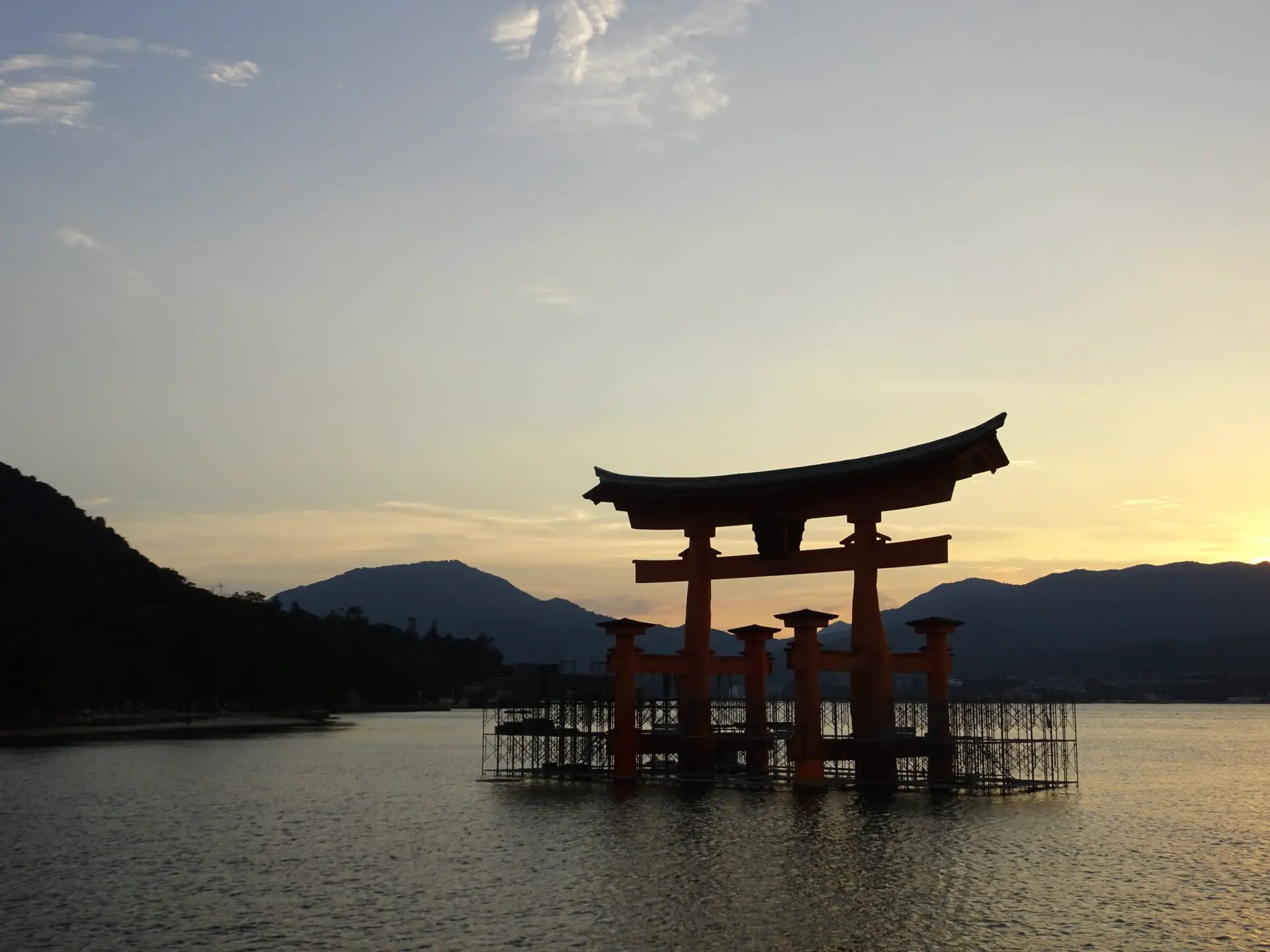
You can check out my dedicated Guide to Itsukushima Shrine for everything you need to know about the unique sight. Check the tide tables here for the best experience of the torii.
Senjokaku Pavilion and Gojunotu Pagoda
The name of this huge wooden hall directly to the north of Itsukushima Shrine translates to “1000 Mat Pavilion”. It was erected in the late 16th century and forms an impressive piece of historical architecture. In between the rafters, some interesting paintings on wood are displayed.
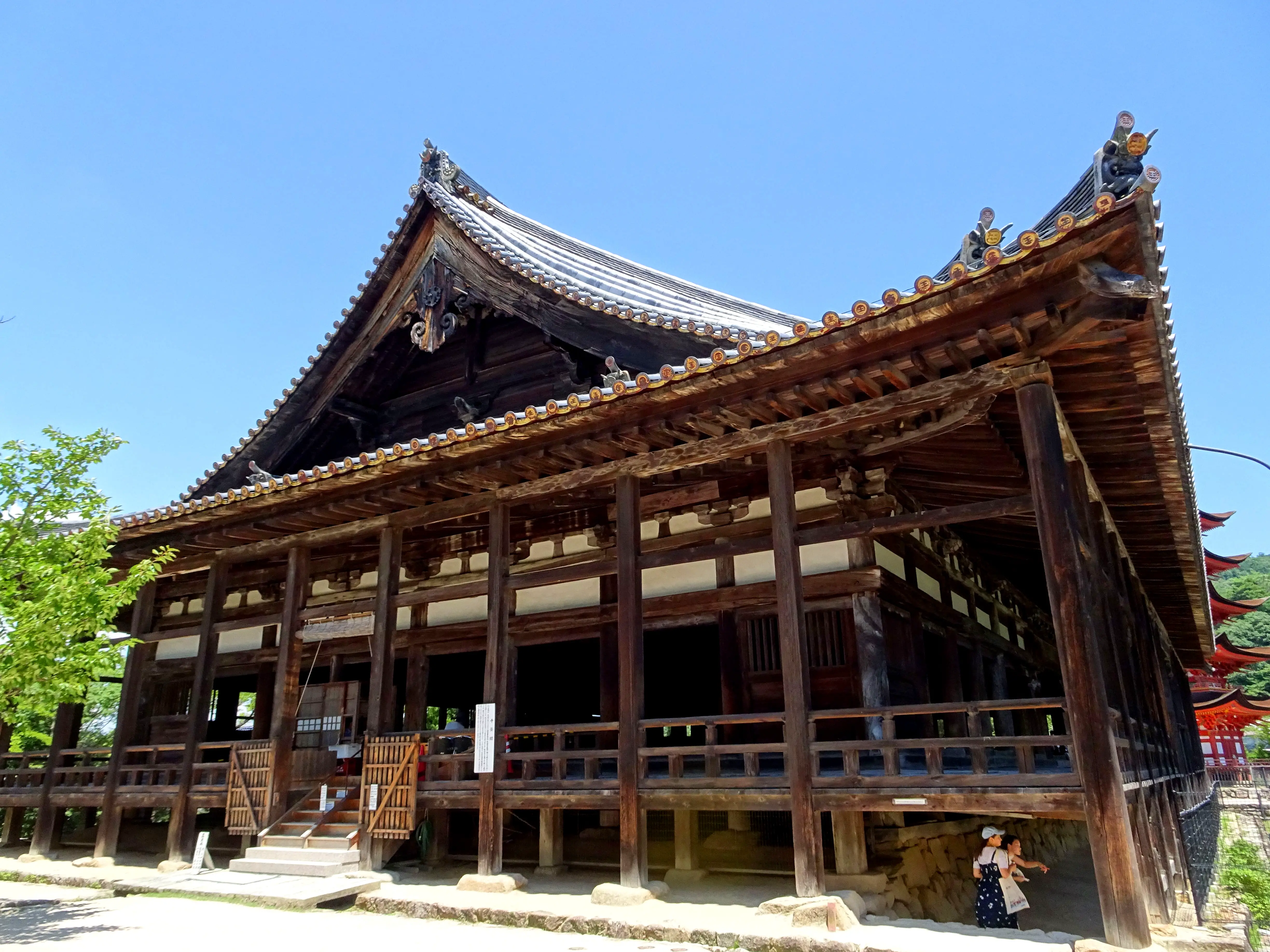
Directly beside the pavilion sits a brilliant red five-storied pagoda. The entrance fee to Senjokaku Pavilion is 100 ¥.
Daigan-Ji Temple
This Buddhist temple dates to the 13th century, and its monks used to be responsible for the repair and reconstruction of Itsukushima Shrine.
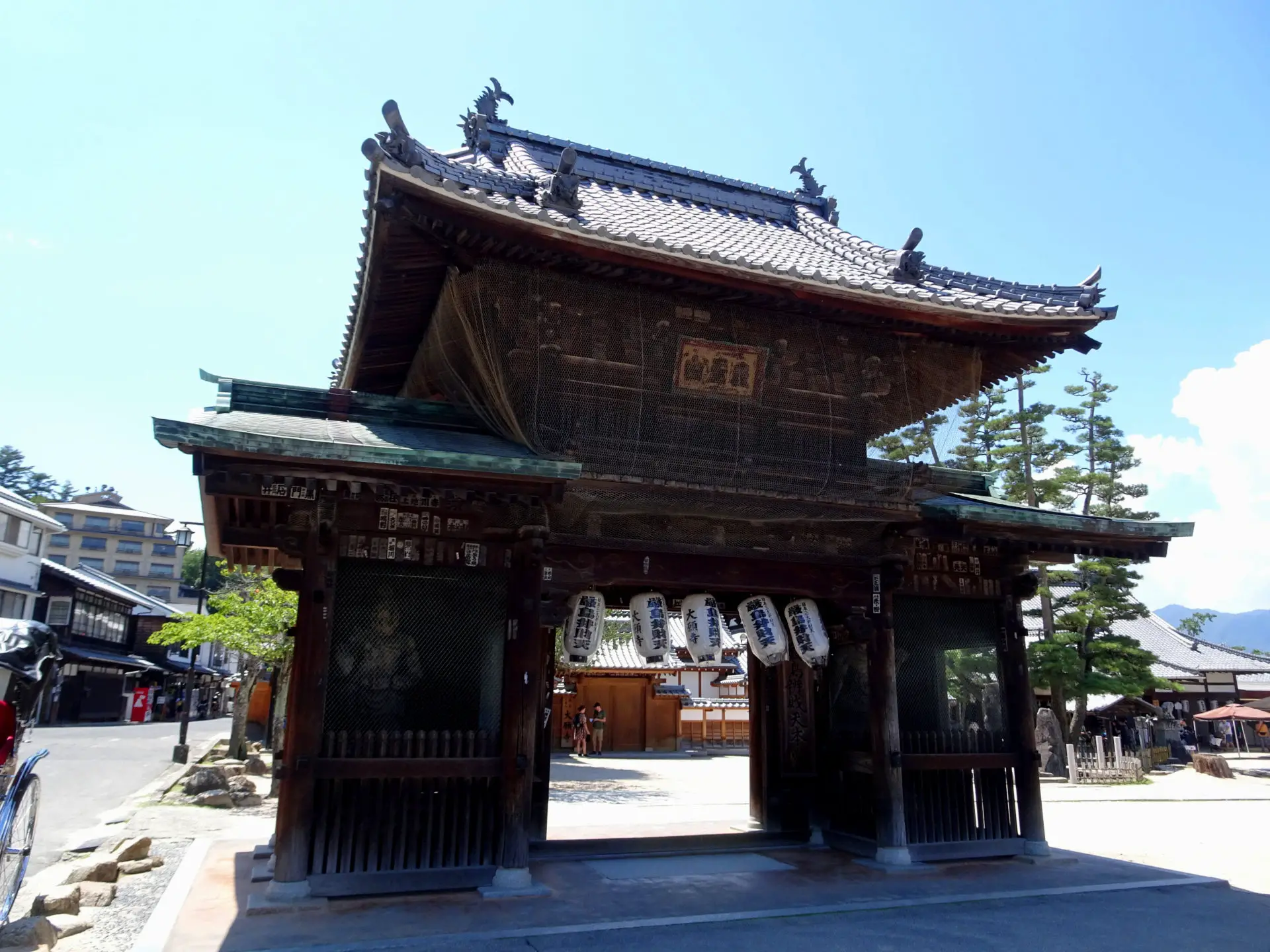
It is dedicated to Benzaiten, the Goddess of eloquence, wisdom and music, and features some intricate wood carvings. It can be found directly west of Itsukushima Shrine’s Treasure house.
Daishō-in Temple
This fascinating Buddhist temple has a pretty location at the northern foot of Mount Misen and features an array of interesting buildings set in beautifully manicured grounds. You could spend a long time here as there are countless weird and wonderful details to discover, but if you don’t have a lot of time to spare, you should at least check out some of the highlights.
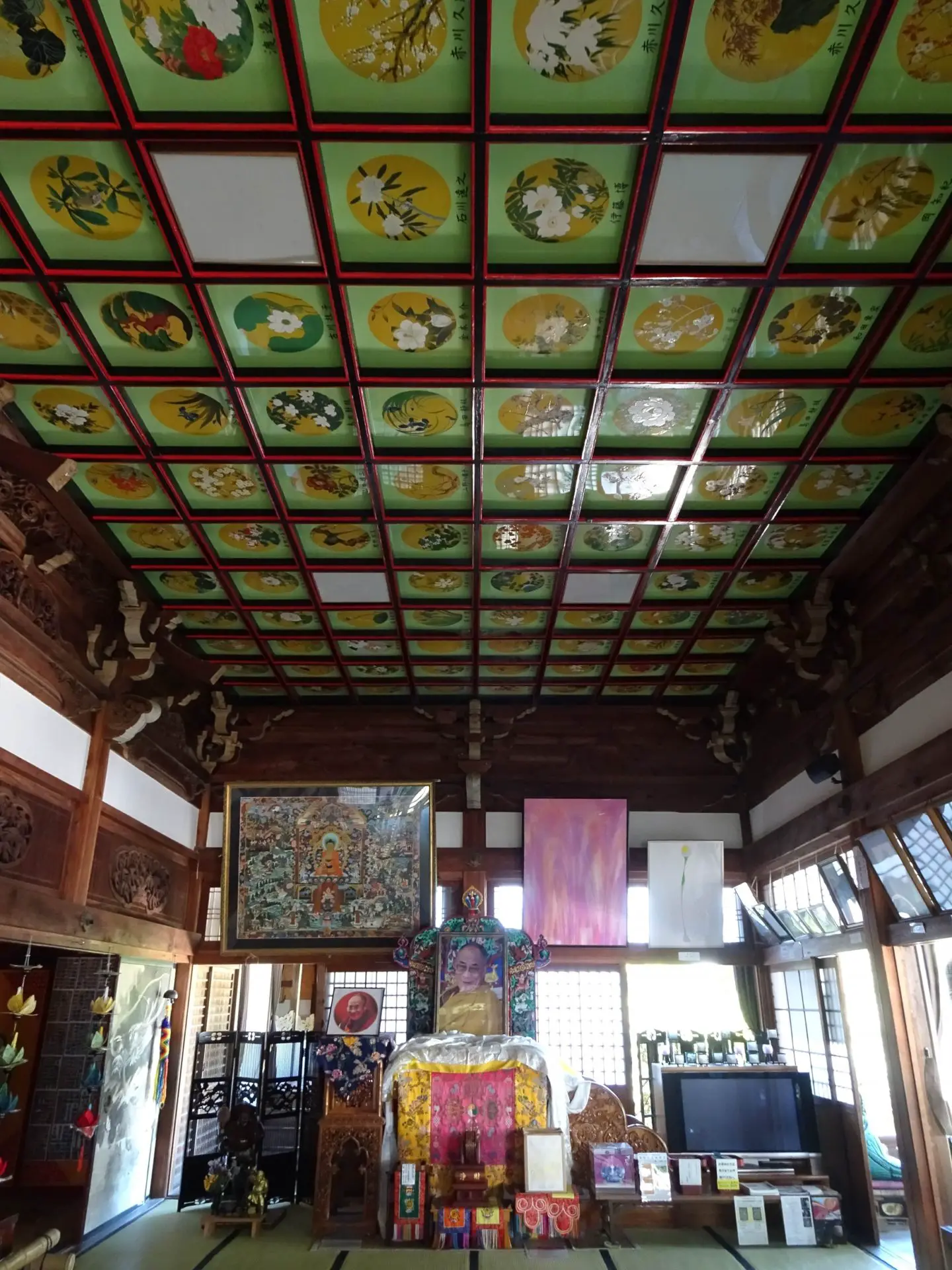
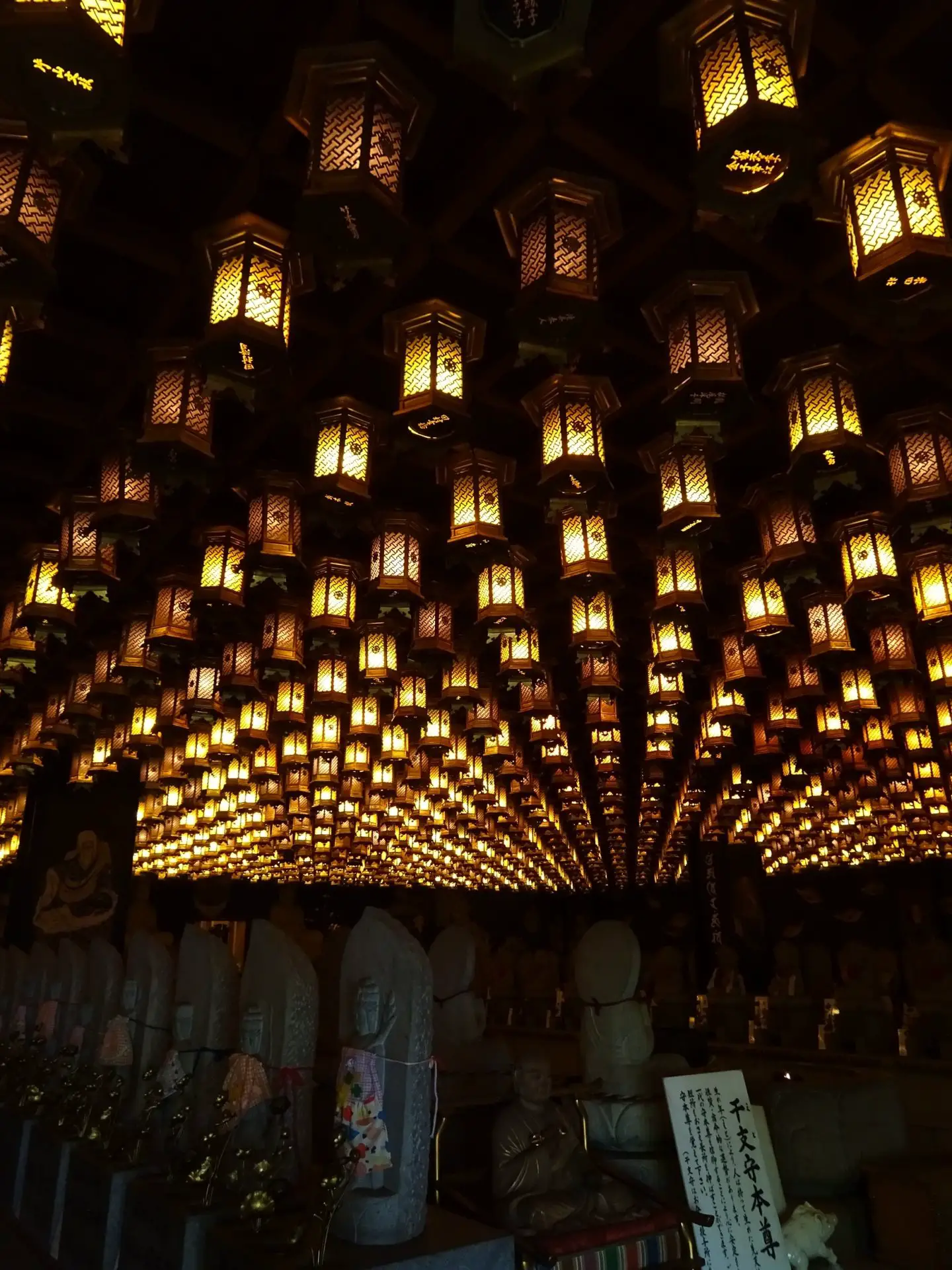
My personal favourite would be Henjokutsu Cave underneath the southernmost temple, which is illuminated by a huge array of lanterns and displays idols from all 88 temples of the Shikoku Henro Pilgrimage.
Also check out the Kannon-do Building with its glazed coffered ceiling and elements hinting at Tibetan Buddhism, including a beautiful mandala. It’s the big building on your right once you enter the complex. The slightly smaller building on the southern side of the same courtyard contains thousands of images of Fudo Myoo, an important protective deity.
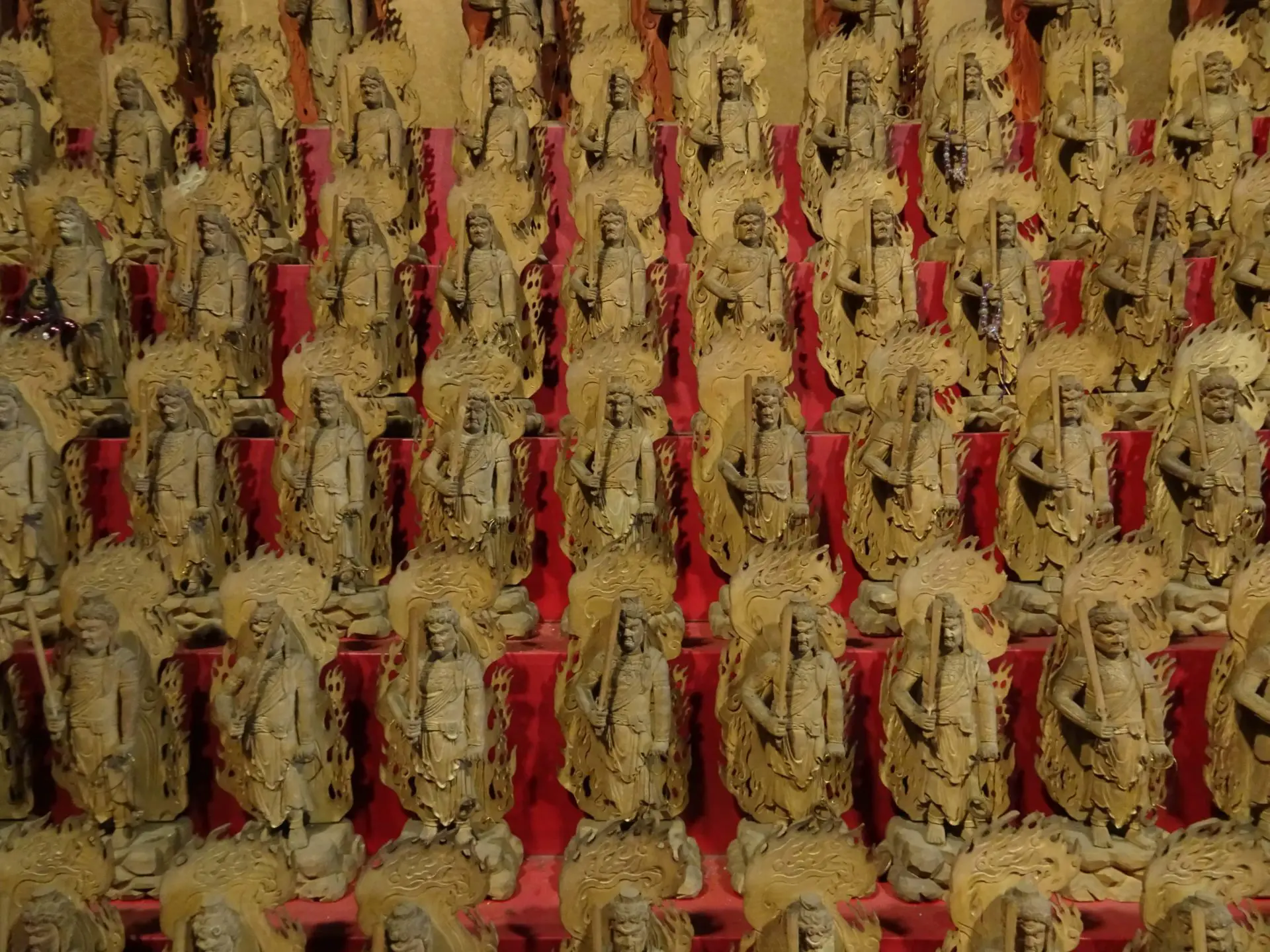
Directly to the south there’s a small round pavilion picturesquely surrounded by water, which contains statues of the “Seven Lucky Gods of Miyajima”. Take your time exploring the grounds or just soak up the peaceful atmosphere of the place before continuing on.
The temple can be found by following the road south at the intersection near the exit of Itsukushima Shrine.
Taho-To Pagoda

This cute red-painted two-storey pagoda dates to the early 16th century and stands on a little hill south-west of Itsukushima Shrine. To get there, walk a couple of meters west from the exit of the Shrine and then follow a set of stairs up the hill.
Miyajima History and Folklore Museum
This small museum is located in an old Merchant’s Residence and details both the position of the island within the larger historical framework of Japan and the daily life of its former inhabitants. The building itself was constructed in the late Edo period in the mid-19th century, and this era is also the main focus point of the displayed artefacts.
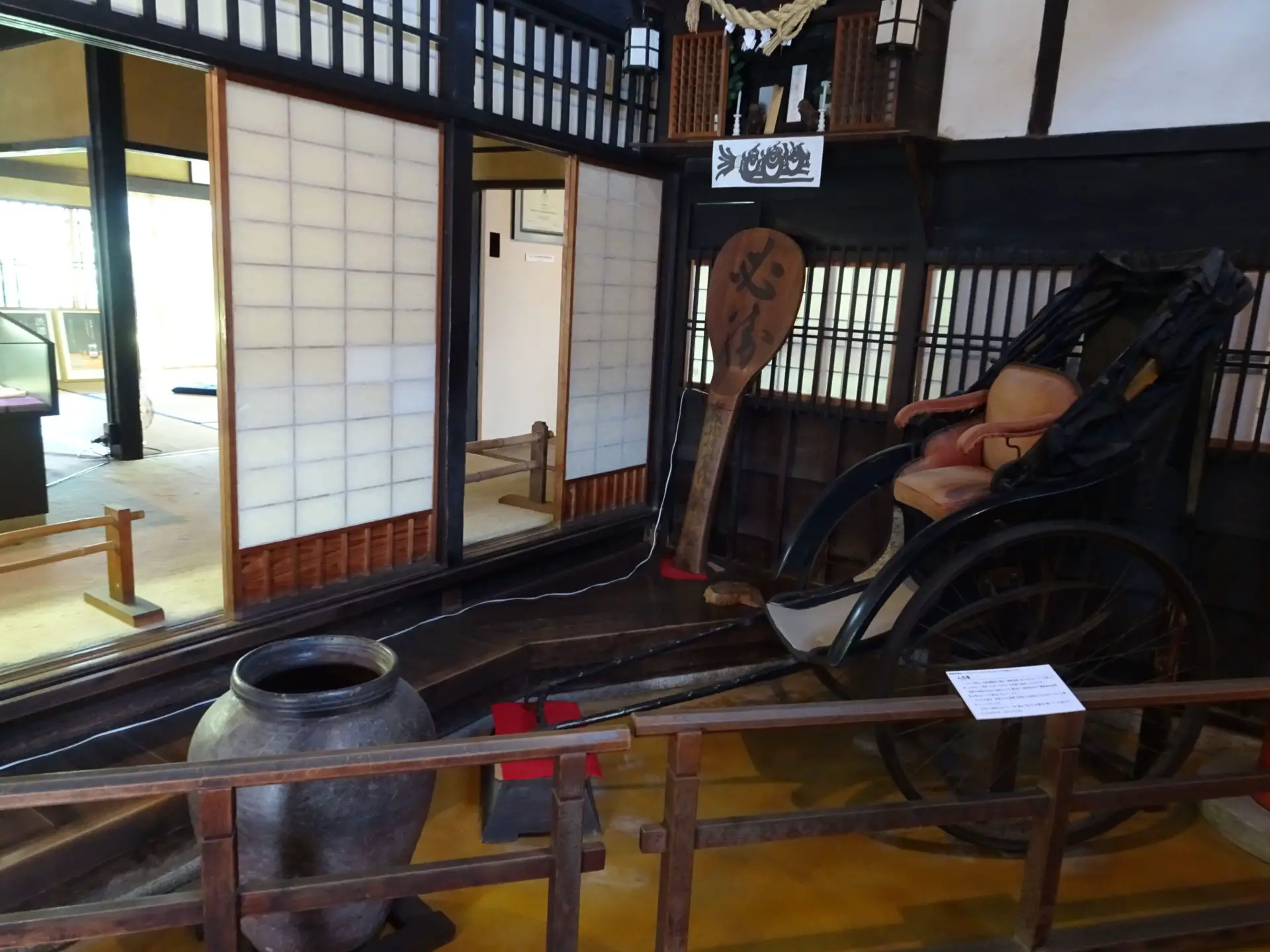
The most interesting part is the front section, where you’ll find the preserved living quarters of the merchant family, allowing you an interesting glimpse into the domestic life of that era. There’s also a pretty little interior garden with a small Koi pond. The entrance fee is 300¥.
Hiking on Mount Misen
At 535m/1755ft. height, Mount Misen it the island’s tallest mountain and offers some great views down to the coast. A walking path leads up the northern slope starting at the eastern side of Daishō-in Temple, or you could simply take the Ropeway. To get to the latter, you’ll need to follow the road along the small canal flowing behind Itsukushima Shrine to the south-east, crossing the cute Momijidani Park.

The Ropeway operates from 9AM to 4PM (Check the current times here) and costs 1010¥ one way/1,840¥ return. We took the ropeway up and walked down, which might be the best way to do it. I’ll describe that option here. On the way up, you’ll have to change ropeways with especially the second tour providing fantastic vistas down to the northern and eastern sections of Miyajima and other small islands in the Bay of Hiroshima.
There’s a small viewpoint near the upper terminus of the ropeway which you should check out before following the path west for about twenty minutes to Misen Honda Shrine, where you’ll find some impressive wooden shrine buildings as well as an Eternal Flame said to have been lighted by the restless Kobo Daishi in the 9 th century.
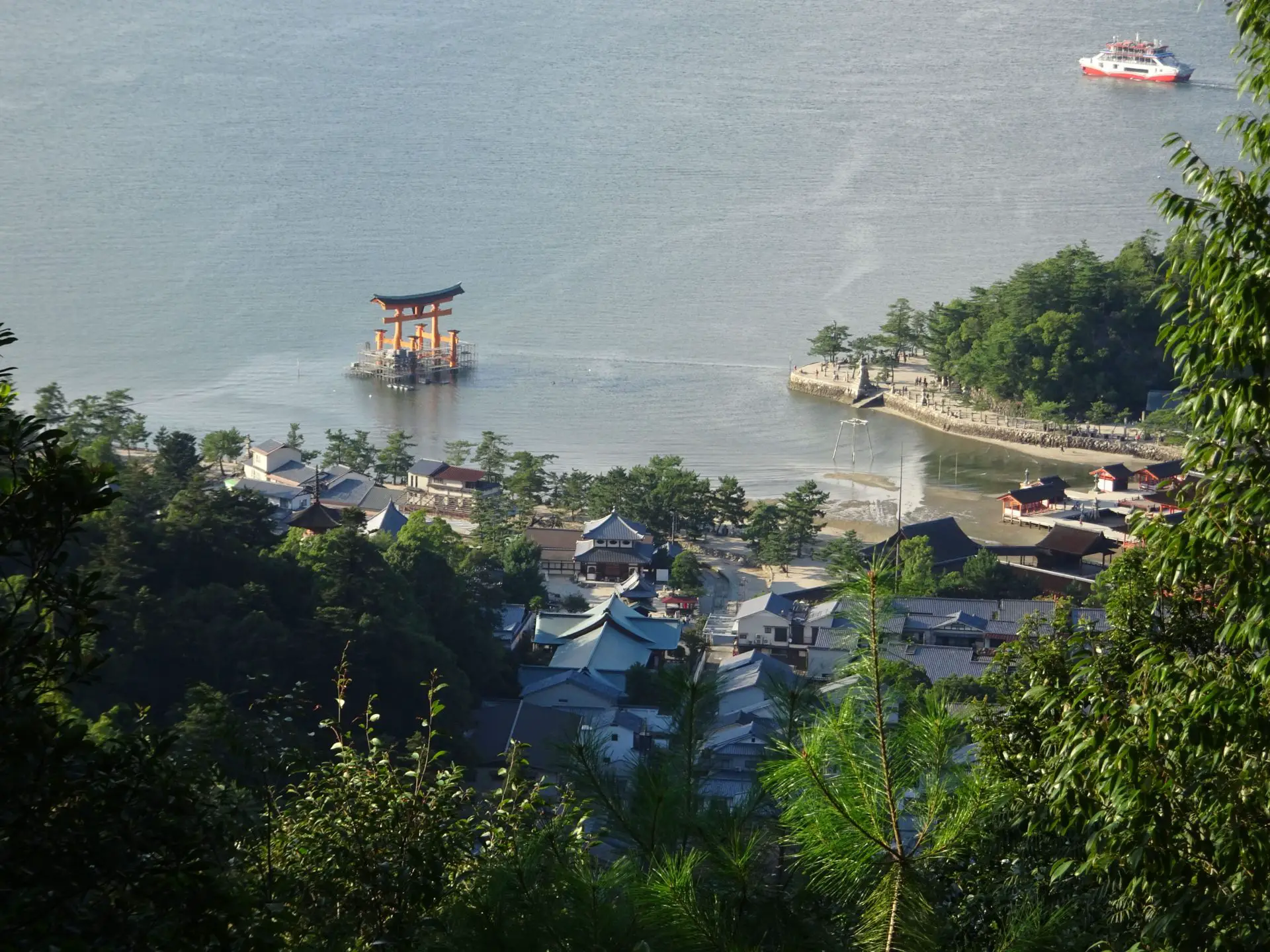
Another five minutes bring you up to the Top of Mount Misen, where you can climb up the rocks and enjoy the splendid views. Back at the Misen Honda Shrine, you follow the path west and turn north at the intersection to make your way down the slope of the mountain via a path leading past Daishō-in Temple.
This should take about half an hour, and on the way you’ll get some nice views of Itsukushima Shrine and the torii.
The Deer of Miyajima
To some visitors, the tame deer walking around the promenade are the actual star attraction of the island, and it’s easy to see why. The tame Sika Deer were considered sacred animals and thus even allowed to roam the island when most humans weren’t.
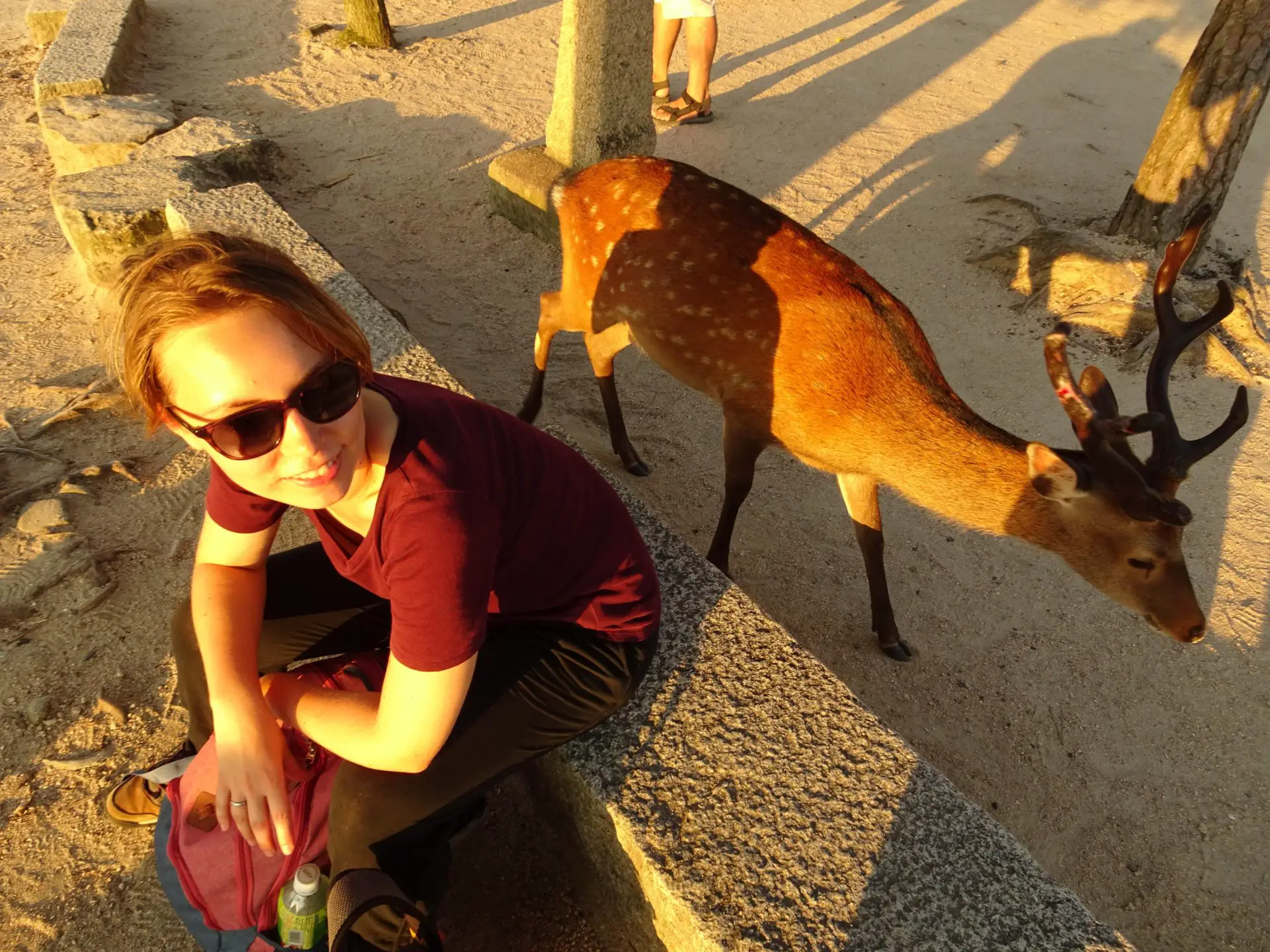
Nowadays, the surprisingly docile animals will freely approach tourists walking along the promenade looking for snacks and as they tend not to make a difference between crackers and paper slips, you’d be well-advised to take care of your documents😉.
Apart from that, they make for a great photo motive, for instance, if you can snap one of them with the torii in the background.
Guided Tours of Miyajima Island
If you prefer a hassle-free visit with a knowledgeable guide, several providers offer Walking Tours or Riksha Tours of the island. There’s even a Sea-Kayak Tour aimed at both beginners and experienced kayakers, which will give you the opportunity to see the island from a different vantage point.
Have a look at the experiences below to see if one strikes your fancy:
Map of Miyajima Island
This map includes all the sights mentioned above as well as some possible places to stay at.
Practicalities
How to get to Miyajima Island
The only way to reach the island is by ferry from the mainland. The cheaper option is to take the train along JR Sanyo Line to Miyajimaguchi Station (about 30 minutes/420¥ from Hiroshima Station), then walk down the big road south-east of the station for 5 minutes to the pier. Ferries go every 15 minutes between 8AM and 7PM, and a little less frequently in the hours before/after. You can check the entire schedule here.
The trip takes only about 10 minutes and affords nice views of the torii. The return trip is 360¥.
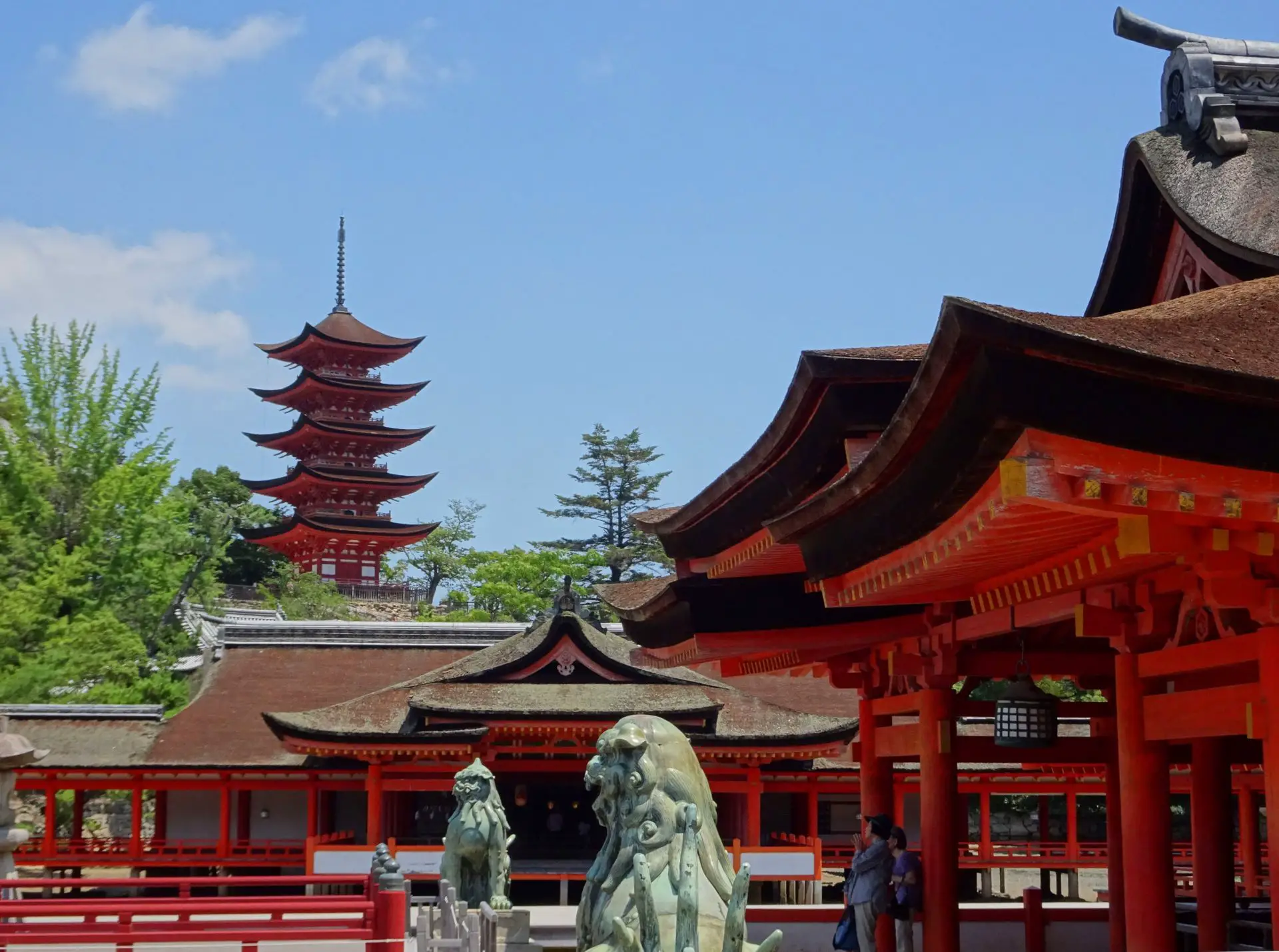
The faster, albeit more expensive, option would be taking the high-speed ferry from Hiroshima Ujina Port, which takes about 30 minutes and costs 1,900¥. The schedule can be found here.
Once you’ve arrived on Miyajima Island, turn right at the ferry terminal and follow the coastal road for about 10 minutes until you reach the shrine and main cluster of sights.
Where to stay on Miyajima Island
We stayed at Bar & Hotel Colors Miyajima, which is located on the mainland close to the ferry pier for the island.
Miyajima Island itself also has a few accommodation options, most of them in the mid-range segment, although the occasional budget deal can be found, like Miyajima Guest House Mikuniya. Have a look at the map above to find a place that suits you.
Where to eat on Miyajima Island
There’s no shortage of restaurants serving tasty local fare around Miyajima Village. We ate at Tori-I, which had good, affordable seafood despite its prime location in the most touristy area of the island. It also seemed to be massively popular with domestic visitors, which is always a good sign.
If you go there, try their fantastic grilled oysters. If sea-food isn’t your cup of tea, there are plenty of other restaurants in the surrounding area.
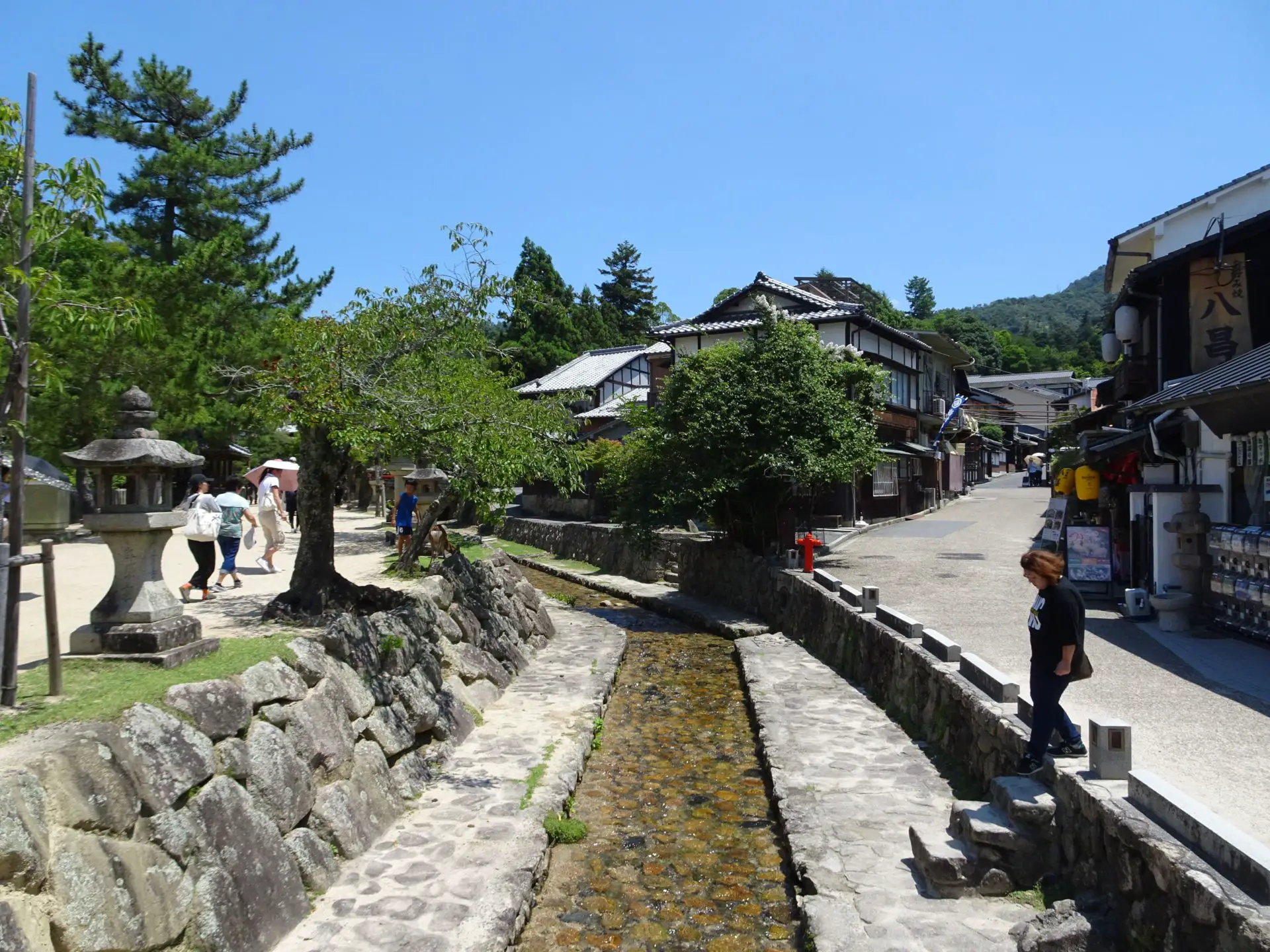
See also
Everything you need to know about visiting the magnificent Itsukushima Shrine, Japan
Visiting the bathhouse from Spirited Away and other great things to do in Matsuyama, Japan
The best things to do in Okayama, capital of Japan’s “Land of Sunshine”